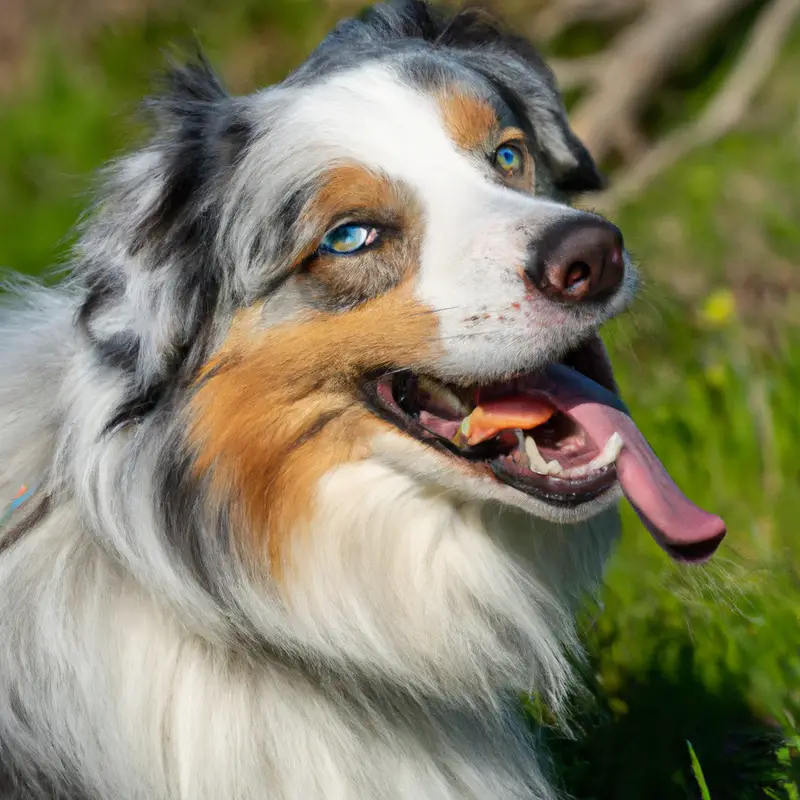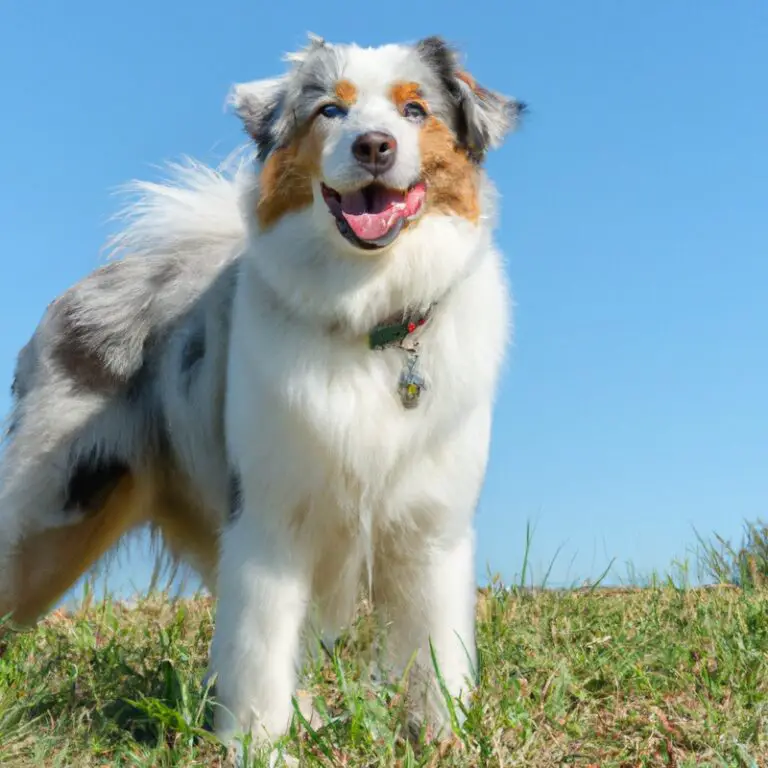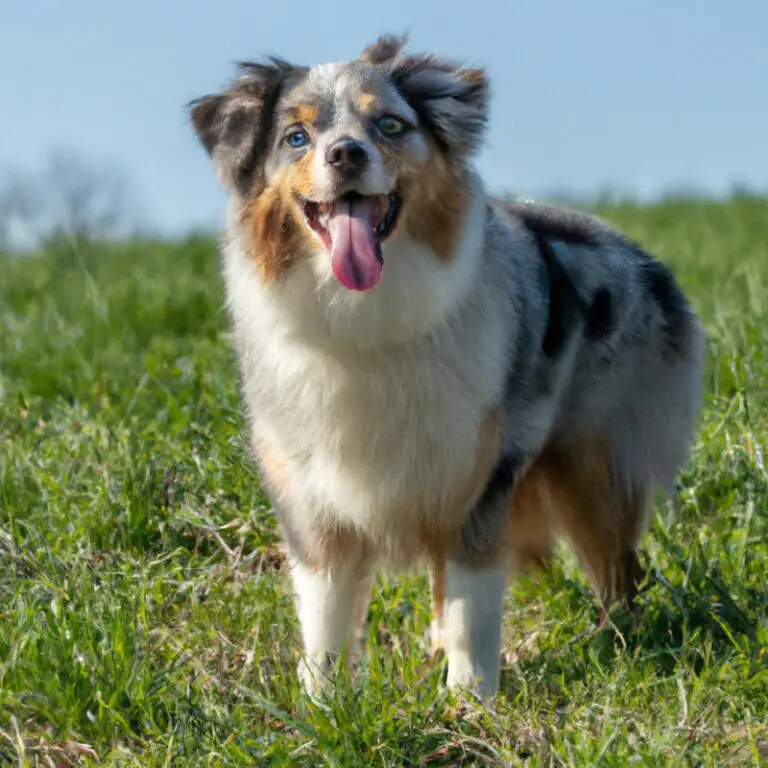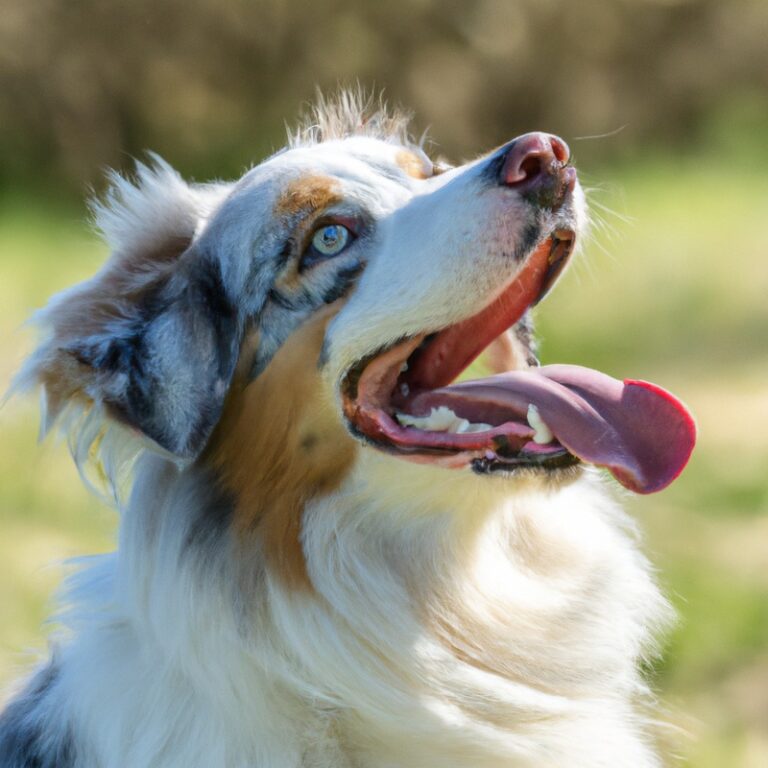Can Australian Shepherds Be Trained To Be Successful In Sledding?
Key Takeaways:
- Australian Shepherds can be trained to participate in sledding activities, but their success may vary depending on individual traits and physical capabilities.
- The natural herding instincts of Australian Shepherds can be harnessed and trained to adapt to the skills required for sledding.
- Proper training, conditioning, and socialization are crucial for Australian Shepherds to excel in sledding.
- While Australian Shepherds can participate in sledding, they may not match the speed or endurance of traditional sled dog breeds.
Have you ever wondered if Australian Shepherds can conquer the thrilling world of sledding? Well, wonder no more, because I’m here to reveal the truth.
As an expert in canine training and a passionate sledding enthusiast myself, I’ve dug deep into the capabilities of these intelligent and versatile dogs.
Australian Shepherds are well-known for their physical prowess and high energy levels, making them a promising candidate for this exhilarating dog sport. But before we dive into the possibilities, let’s first explore the fascinating world of Australian Shepherds and the exciting sport of sledding.
| Australian Shepherds in Sledding | Yes | No |
|---|---|---|
| Physical Abilities | ||
| Intelligence and Trainability | ||
| Weather Resistance | ||
| Temperament | ||
| Size and Strength |
Overview of Australian Shepherds
Physical characteristics and temperament of Australian Shepherds
Australian Shepherds have distinct physical characteristics and a temperament that sets them apart. They are medium-sized dogs with a well-muscled body and a dense double coat that comes in various colors.
Their eyes are expressive and can be blue, brown, or a combination of both.
In terms of temperament, Australian Shepherds are intelligent, energetic, and highly trainable. They are known for being loyal, affectionate, and protective of their families.
They have a strong work ethic and are eager to please.
However, they can also be independent thinkers and may require consistent and patient training. These dogs thrive in active households and enjoy participating in various activities.
They need regular exercise and mental stimulation to prevent boredom.
Australian Shepherds are great companions for those who lead an active lifestyle and are willing to provide them with plenty of physical and mental challenges. When considering Australian Shepherds for sledding, their physical attributes and temperament play a crucial role.
They possess the strength and endurance required for this activity.
Furthermore, their intelligence and trainability make them excellent candidates for learning and following commands.
Sledding as a Dog Sport
Brief history and purpose of sledding
Sledding, also known as dog sledding, has a rich history and serves various purposes. It originated as a mode of transportation in snowy regions where sled dogs would pull sleds, carrying people and supplies.
This ancient practice dates back thousands of years and was prevalent across Arctic and Subarctic regions.
The purpose of sledding has evolved over time. Initially, it was a vital means of transportation for hunting, trading, and exploration.
It allowed humans to traverse long distances in challenging winter conditions efficiently.
Additionally, sled dogs were used in search and rescue missions due to their exceptional physical abilities and endurance. In modern times, sledding has transitioned into a recreational activity and a competitive sport.
Many enthusiasts participate in races and events, showcasing the athleticism and teamwork of both dogs and humans.
Sledding also offers individuals an opportunity to connect with nature and enjoy the beauty of winter landscapes. The history and purpose of sledding highlight the important role that sled dogs, including Australian Shepherds, play in this sport.
These dogs possess the strength, agility, and stamina required for pulling sleds.
Australian Shepherds, known for their intelligence and trainability, excel in sledding with proper training and conditioning. As we delve deeper into the world of sledding, we will explore the training requirements for sled dogs, assess Australian Shepherds’ suitability for sledding, and provide tips for training these energetic and intelligent canines.
So, let’s continue our journey to uncover the secrets of successful sledding with Australian Shepherds!
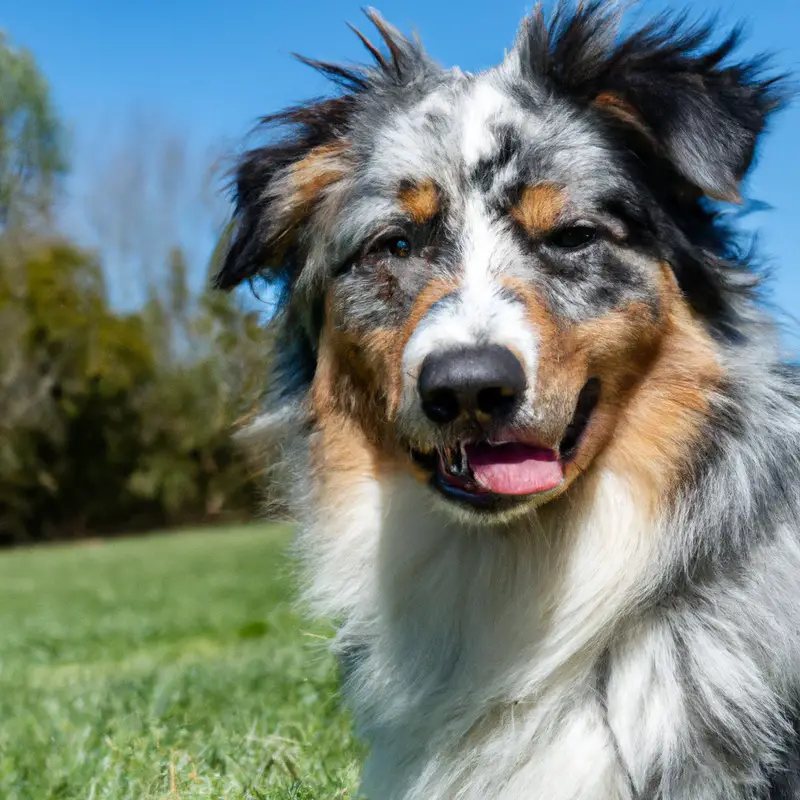
Popular dog breeds used for sledding
Popular dog breeds used for sledding include Siberian Huskies, Alaskan Malamutes, and Samoyeds. These breeds are known for their endurance, strength, and ability to withstand cold climates.
They have a natural instinct for pulling sleds and have been used in sled dog racing for centuries.
Other breeds such as the Greenland Dog, Canadian Eskimo Dog, and the Alaskan Husky are also commonly used for sledding. These breeds have the physical attributes and temperament necessary for the sport and can excel with proper training and conditioning.
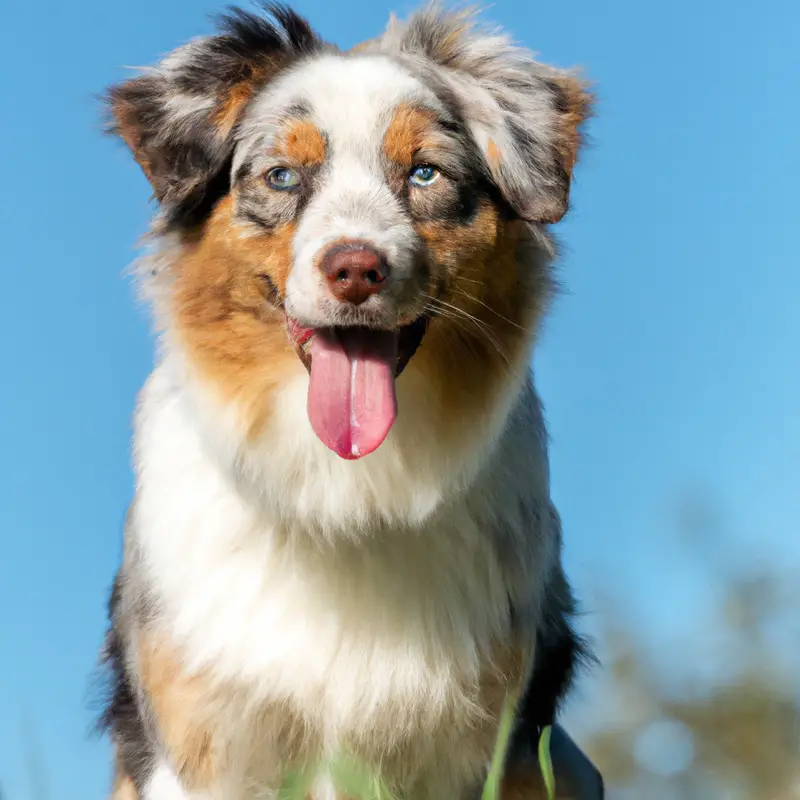
Training Requirements for Sled Dogs
Health and fitness considerations
When considering training Australian Shepherds for sledding, it’s important to prioritize their health and fitness. As an expert, I know that these dogs need to be in good physical condition to excel in this sport.
Regular exercise is crucial to build their endurance and strength.
Furthermore, proper nutrition is essential to provide them with the necessary energy and support their overall well-being. Regular check-ups with a veterinarian are also important to ensure that they are in good health and able to handle the physical demands of sledding.
By taking care of their health and fitness, you can set your Australian Shepherd up for success in sledding.
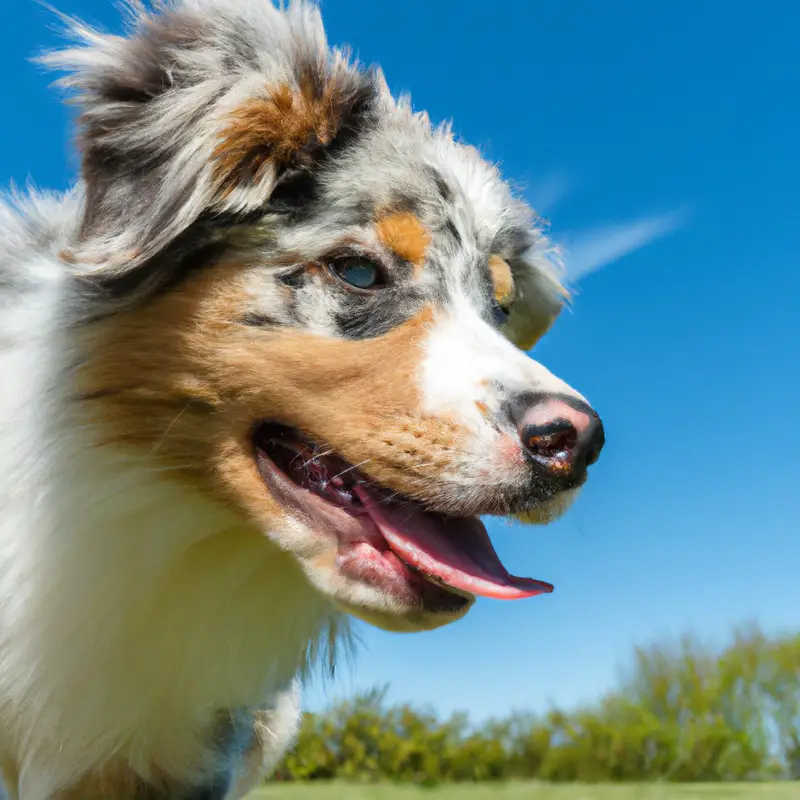
Obedience and basic commands training
Obedience and basic commands training is essential for all dogs, including Australian Shepherds who are being trained for sledding. The foundation of obedience training lies in teaching your dog to follow basic commands such as “sit,” “stay,” “come,” and “heel.” These commands establish boundaries, ensure safety, and help in effective communication between you and your dog.
To begin obedience training, start with one command at a time.
Use clear and consistent verbal cues along with hand signals to reinforce the command. Always reward your Australian Shepherd with praise, treats, or playtime when they respond correctly to a command.
Consistency is key when it comes to training.
Practice the commands in various settings, gradually increasing the level of distractions. This will help your dog learn to obey even when there are other stimulating factors around.
Remember to keep training sessions short and positive.
Dogs, including Australian Shepherds, have short attention spans, so it’s important to keep the sessions engaging and enjoyable. End on a positive note, and always praise your dog for their efforts.
Repetition is crucial for successful obedience training.
Practice the commands regularly, both inside and outside of training sessions. The more your Australian Shepherd practices, the faster they will learn and respond to your commands.
In addition to obedience training, it’s a good idea to socialize your Australian Shepherd with various environments, people, and other animals.
This helps them become well-rounded, confident, and obedient companions. Lastly, consider enrolling in a basic obedience training class or working with a professional dog trainer who specializes in obedience training.
They can provide guidance, structure, and personalized advice to ensure your Australian Shepherd learns the necessary skills for sledding and other activities.
Overall, obedience and basic commands training is a crucial aspect of preparing your Australian Shepherd for sledding. With patience, consistency, and positive reinforcement, your furry friend will be well on their way to becoming a successful sled dog.
Assessing Australian Shepherds for Sledding
Evaluating physical attributes for sledding
When evaluating Australian Shepherds for sledding, there are certain physical attributes to consider. Here are some key factors to look for:
- Size and Build: Australian Shepherds should have a strong and muscular build, with a well-balanced and proportionate body. Their size should be appropriate for the weight they will be pulling. Too small, and they may struggle with the physical demands of sledding.
- Coat: A thick, double coat is essential for protecting the Australian Shepherd from harsh weather conditions. Look for a dense and weather-resistant outer coat, along with a soft and insulating undercoat. This will help them stay warm in cold temperatures.
- Stamina and Endurance: Sledding requires dogs to have impressive stamina and endurance. Australian Shepherds are known for their high energy levels and athleticism, making them well-suited for this sport. Look for dogs with a strong work ethic and a natural drive to keep going.
- Strength: Sledding requires pulling heavy loads, so strength is crucial. Australian Shepherds should have well-developed muscles, especially in their chest, shoulders, and hindquarters. This will enable them to generate the power needed to pull the sled effectively.
- Joint Health: As sledding can be physically demanding, it’s important to assess the joint health of Australian Shepherds. Look for dogs with good conformation and no signs of joint issues. Healthy hips and elbows are particularly important for their long-term mobility and performance.
Remember, while physical attributes are important, they are not the only factors to consider when evaluating Australian Shepherds for sledding. Mental aptitude, temperament, and individual capacity also play significant roles in the success of a sled dog.
Assessing mental aptitude for sledding
Assessing the mental aptitude of Australian Shepherds for sledding is an important factor to consider. While physical attributes are essential, a dog’s mental capabilities play a significant role in their success as a sled dog.
When evaluating a dog’s mental aptitude, there are a few key traits to look for.
Firstly, intelligence is crucial, as sledding requires problem-solving skills and the ability to follow commands. Secondly, focus and trainability are important indicators of a dog’s mental aptitude.
If a dog can concentrate on the task at hand and respond well to training, they have a higher chance of excelling in sledding.
Thirdly, a strong work ethic and a desire to please their handler are valuable qualities in a sled dog. Observing how a dog interacts with their environment and their willingness to learn can give you insights into their mental aptitude for sledding.
Certain personality traits, such as being naturally calm, confident, and adaptable, can also contribute to a dog’s mental aptitude for sledding.
Keep in mind that each Australian Shepherd is unique, and while some may show aptitude for sledding, others may not. It’s essential to assess each dog on an individual basis and consider their strengths and limitations when determining their suitability for sledding.
By carefully evaluating their mental aptitude, you can better gauge whether an Australian Shepherd will thrive in the sport of sledding.
Tips for Training Australian Shepherds in Sledding
Establishing a training routine
Establishing a training routine for your Australian Shepherd is key to their success in sledding. A consistent and structured routine will help them develop the necessary skills and build their physical endurance.
When it comes to training, I recommend starting with short sessions, gradually increasing the duration over time.
This will prevent your dog from getting overwhelmed and keep them engaged. Remember to be patient and maintain a positive attitude throughout the training process.
Incorporating regular exercise outside of training sessions is also important.
Take your Australian Shepherd for walks, hikes, or runs to keep them physically fit. This will help build their stamina for sledding activities.
Additionally, it’s crucial to incorporate mental stimulation into their routine.
Puzzle toys, obedience training, and interactive games can help keep their mind sharp and focused. To establish a training routine, consider the following tips:
- Set a consistent training schedule: Establish regular times for training sessions and stick to them. This will help your Australian Shepherd understand and anticipate when it’s time to work.
- Start with basic obedience commands: Before diving into sled training, make sure your dog has a solid foundation in basic obedience commands like sit, stay, and come. This will provide a strong framework for further training.
- Gradually introduce sledding-specific exercises: Once your Australian Shepherd is comfortable with basic commands, gradually introduce them to sledding-specific exercises. Start with simple pulling exercises on flat ground and gradually progress to more challenging terrains.
- Use positive reinforcement techniques: Reward your dog with treats, praise, and playtime when they demonstrate desired behaviors during training. This positive reinforcement will help them associate sledding activities with positive experiences.
Remember, each dog is unique, so adjust the training routine based on your Australian Shepherd’s capabilities and limitations. With consistency, patience, and positive reinforcement, your Australian Shepherd can become successful in sledding.
Positive reinforcement techniques
Positive reinforcement techniques are key when training Australian Shepherds for sledding. Here are some effective methods to encourage desired behaviors:
- Rewards: Use treats, praise, or playtime as rewards when your Australian Shepherd follows commands correctly or exhibits good behavior. This positive reinforcement will motivate them to repeat those actions.
- Clicker Training: Combine a clicker with treats to mark desired behaviors. The clicking sound becomes associated with rewards, allowing for clear communication with your dog during training sessions.
- Consistency: Be consistent in your training approach and use positive reinforcement consistently. This helps your Australian Shepherd understand what is expected of them and reinforces the desired behaviors.
- Break Tasks Down: Break down sledding tasks into smaller, manageable steps. Reward your dog each time they successfully complete a step, gradually building up to the full behavior.
- Patience: Training takes time and patience. Give your Australian Shepherd time to learn and adjust to new tasks. Avoid getting frustrated and maintain a positive attitude throughout the training process.
Remember, positive reinforcement techniques are effective and humane ways to train your Australian Shepherd for sledding. With consistency, patience, and rewards, you can help your dog succeed in this exciting dog sport.
Common Challenges and Solutions
Overcoming stubbornness and independence
Overcoming stubbornness and independence is a key challenge when training Australian Shepherds for sledding. These dogs have a strong-willed nature and a tendency to assert their independence.
However, there are strategies to address this.
The first step is to establish yourself as the leader. Show confidence and consistency in your training approach.
Be firm but fair, and set clear boundaries.
This will help the Australian Shepherd understand their place in the pack and develop trust in your guidance. Next, focus on positive reinforcement.
Reward desired behaviors with treats, praise, and play.
This breed is highly motivated by rewards and will respond well to positive reinforcement techniques. Avoid using punishment or harsh methods, as it can lead to resistance and mistrust.
Consistency is key when working with Australian Shepherds.
Set a regular training schedule and stick to it. Practice obedience and basic commands regularly to reinforce good behavior.
This breed thrives on structure and routine, and consistent training will help overcome their stubbornness.
Another effective strategy is to provide mental and physical stimulation. Australian Shepherds are intelligent and active dogs, so engaging their minds and bodies is essential.
Incorporate interactive toys, puzzle games, and agility exercises into their training routine.
This will help channel their energy and reduce their independent streak. Overall, while Australian Shepherds may have a tendency towards stubbornness and independence, with patience, consistency, and positive reinforcement, it is possible to overcome these challenges and train them to be successful in sledding.
By understanding their unique traits and tailoring your training approach, you can build a strong bond with your Australian Shepherd and achieve impressive results in this dog sport.
Addressing physical endurance limitations
Addressing physical endurance limitations in Australian Shepherds is an important aspect of training them for sledding. While this breed is known for their high energy levels, they may not have the same endurance as other sled dog breeds.
To address this limitation, it is crucial to gradually build up their stamina through regular exercise.
Start with shorter runs and gradually increase the distance over time. This will help them develop the necessary muscle strength and cardiovascular endurance for sled pulling.
In addition to exercise, a balanced diet is essential for maintaining their energy levels.
Providing them with high-quality food that is rich in protein and nutrients will support their physical development and help them maintain their stamina. Another way to address endurance limitations is by incorporating interval training into their routine.
This involves alternating between periods of intense exercise and rest.
This helps to gradually increase their stamina and endurance by challenging their cardiovascular system. It is important to monitor the physical limits of Australian Shepherds and avoid pushing them too hard too soon.
Recognizing signs of fatigue, such as excessive panting or slowing down, is crucial.
Overtraining can lead to injuries or burnout, so it’s important to listen to their body and adjust training accordingly. Overall, addressing physical endurance limitations in Australian Shepherds for sledding requires a gradual approach, including regular exercise, a balanced diet, and interval training.
By gradually increasing their stamina and monitoring their limits, these intelligent and high-energy dogs can excel in the sport of sledding.
Advanced Training for Australian Shepherds in Sledding
Progressive strength and endurance exercises
When it comes to training Australian Shepherds for sledding, progressive strength and endurance exercises are essential. These exercises help build the physical capabilities needed for this demanding sport.
Here are some key exercises you can incorporate into your training routine:
- Long-distance running: Start with shorter runs and gradually increase the distance over time. This will improve your Australian Shepherd’s endurance and cardiovascular fitness.
- Weight pulling: Attach a sled or a weighted cart to your dog’s harness and gradually increase the weight. This exercise strengthens their muscles and helps them develop the pulling power required for sledding.
- Hill sprints: Find a hill and have your dog sprint up and down multiple times. This exercise builds strength in their legs and improves their overall agility.
- Swimming: Swimming is an excellent low-impact exercise that enhances your dog’s muscle tone and endurance. It also provides a refreshing break for them during intense training sessions.
- Interval training: Alternate between periods of high-intensity exercise, like running or pulling a weighted sled, and periods of rest or slower activity. This type of training improves both strength and endurance.
Remember to start with shorter and less intense sessions, gradually increasing the duration and intensity as your Australian Shepherd builds their strength and endurance. It’s important to monitor your dog’s condition and adjust the exercises accordingly to prevent any injuries or overexertion.
By incorporating these progressive strength and endurance exercises into your training routine, you’ll be preparing your Australian Shepherd for the physical demands of sledding.
Patience and consistency are key, and always remember to reward your dog for their hard work and progress.
Introducing sledding commands and techniques
When it comes to introducing sledding commands and techniques to Australian Shepherds, there are a few key commands that are important to teach. One of the most crucial commands is “hike,” which signals the dog to start running.
This can be paired with a hand signal or a whistle for better communication.
Another important command is “gee” for turning right and “haw” for turning left. These directional commands help guide the dog during the sledding activity.
Additionally, teaching your Australian Shepherd to “whoa” is essential for stopping or slowing down.
It’s important to use positive reinforcement techniques such as treats and praise to encourage and motivate your dog during training sessions. Remember, patience and consistency are key when introducing sledding commands and techniques to your Australian Shepherd.
Limitations and Considerations
Recognizing individual capacity and limitations
Recognizing the individual capacity and limitations of Australian Shepherds is essential when training them for sledding. Each dog is unique, with its own strengths and weaknesses.
Some Australian Shepherds may have the physical attributes and temperament required for sledding, while others may not.
When assessing a dog’s capacity for sledding, it’s important to consider their physical attributes. Look for a well-built and muscular body, as well as strong and agile legs.
A dog with good endurance and stamina will be better suited for long-distance sledding.
Additionally, evaluate their mental aptitude. Australian Shepherds should be intelligent, trainable, and have a strong work ethic.
However, it’s important to recognize the limitations of individual Australian Shepherds.
While they are a versatile breed, not all of them may excel in sledding. Some may lack the necessary physical strength or endurance required for this demanding sport.
Additionally, certain health conditions or injuries may limit a dog’s ability to participate in sledding activities.
Adjusting the training approach based on these individual capacities and limitations is vital. Each dog should be trained at their own pace and capability.
Pushing a dog beyond their physical or mental limitations can lead to stress, anxiety, and even injury.
By recognizing and respecting the individual capacity and limitations of Australian Shepherds, we can make informed decisions and tailor the training process accordingly. This will ensure the overall well-being and success of both the dog and the sledding experience.
Adjusting training for different climates
When training Australian Shepherds for sledding, it’s important to consider the climate in which they will be working. Different climates can have a significant impact on a dog’s performance and comfort level.
In cold climates, where snow and ice are prevalent, it’s crucial to focus on conditioning your Australian Shepherd for endurance in low temperatures.
Gradually increase their exercise regimen to build their stamina and ability to withstand the cold. Additionally, provide them with proper insulation, such as a well-fitted dog sledding jacket, to keep them warm during long runs.
In warmer climates, it’s essential to be mindful of the heat and potential overheating.
Avoid exercising your Australian Shepherd during the hottest parts of the day and provide ample shade and water breaks to prevent dehydration and heat exhaustion. Shorter, early morning or late evening training sessions can be more suitable for these conditions.
One important aspect to consider is acclimation.
If you plan on sledding in a climate different from where your Australian Shepherd is accustomed, gradually expose them to the new environment to help them adapt to the change in temperature and conditions. This can help prevent any adverse health effects and improve their performance.
Remember to always monitor your Australian Shepherd’s behavior and well-being during training sessions in different climates.
If they show signs of discomfort, fatigue, or distress, it’s crucial to adjust and modify their training accordingly. Each dog is unique, and their tolerance to different climates may vary.
By being mindful of the climate and making necessary adjustments, you can ensure that your Australian Shepherd stays safe, comfortable, and successful in sledding regardless of the weather conditions.
Final Verdict
Australian Shepherds can indeed be trained to excel in sledding. Their physical characteristics and intelligence make them well-suited for this sport.
However, it is important to carefully assess their individual capacity and limitations, as well as adjust the training for different climates.
Training requirements for sled dogs include health and fitness considerations, obedience training, and assessing both physical attributes and mental aptitude. Establishing a training routine and utilizing positive reinforcement techniques are essential for successful training.
While there may be challenges to overcome, with patience and perseverance, Australian Shepherds can become skilled sled dogs.
So, if you have an Australian Shepherd and a passion for sledding, it’s time to hit the trails and enjoy the exhilaration of this incredible sport!

